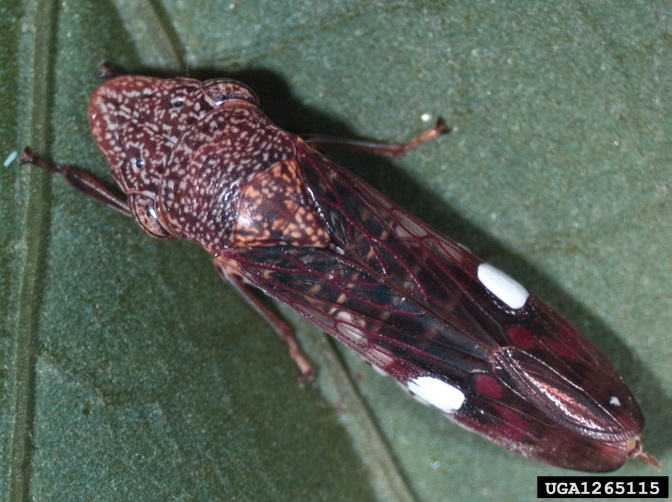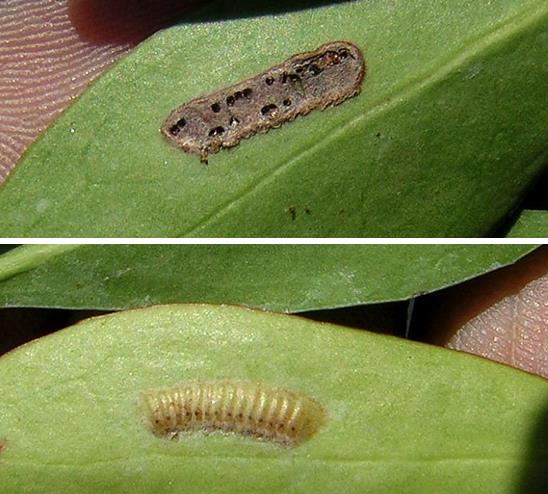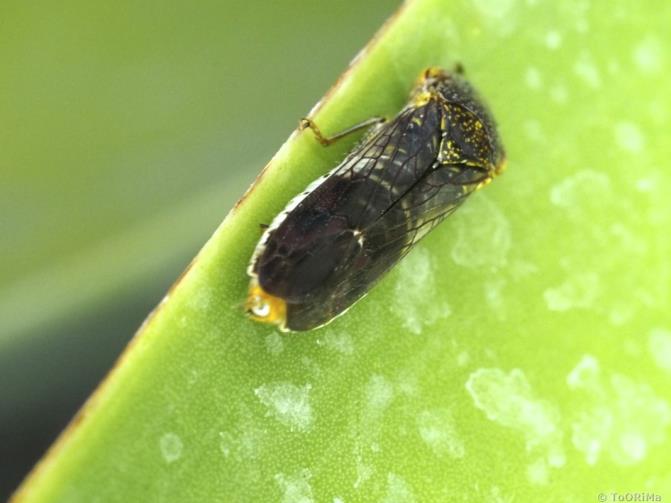
Glassy-winged sharpshooter
| Primefact number | Edition | Published | Author |
|---|---|---|---|
| 1192 | Second | Apr 2017 | Plant Biosecurity and Product Integrity |



The insect glassy-winged sharpshooter (GWSS) is a large leafhopper known to vector the disease causing bacterium Xylella fastidiosa.
Glassy-winged sharpshooter and X. fastidiosa affect a wide range of plants. The resulting disease symptoms are known by a variety of names depending on the host; Pierce’s disease in grapevines, leaf scorch in tree nuts, phony peach disease in peach, leaf scald in plum and variegated chlorosis in citrus.
Glassy-winged sharpshooter (Homalodisca vitripennis) is an exotic plant pest not present in Australia. This insect is a serious threat to Australia’s viticulture, citrus, stonefruit, tree nut and nursery production industries.
Notifiable status
Glassy-winged sharpshooter (Homalodisca vitripennis) is a notifiable plant pest in NSW.
All notifiable plant pests and diseases must be reported within 1 working day. You can report notifiable plant pests and diseases by one of the following methods:
- Call the Exotic Plant Pest Hotline 1800 084 881
- Email biosecurity@dpi.nsw.gov.au with a clear photo and your contact details
- Complete an online form
A full list of notifiable plant pests and diseases can be found in Schedule 2 of the NSW Biosecurity Act 2015.
Description
Adult GWSS are large leafhoppers easily seen with the naked eye. The body is 12–14 mm long with a large flat head and prominent eyes. Body colouring is generally dark brown to black above with a creamy coloured underside.
The wings of GWSS are transparent with reddish veins. Females may have a white chalky patch on each wing and the head may be covered with small ivory or yellow dots (Figure 1).
Nymphs have a similar body shape to adults but are wingless, greyish in colour and have prominent red bulging eyes.
Clusters of around 10–12 sausage shaped eggs are laid side by side on the underside of leaves. When eggs hatch the leaf tissue at the egg site dies and appears as a permanent brown scar (Figure 2).
Symptoms
Glassy-winged sharpshooters are sap feeders, often found feeding on woody plant tissues such as stems, trunks, branches and leaf petioles.
No visible symptoms occur as a result of GWSS feeding other than a whitewashed appearance of leaves known as ‘Leafhopper rain’ (Figure 2).
Leafhopper rain is caused by droplets of clear liquid excreted by GWSS as they feed. These droplets dry to leave behind the white residue.
Symptoms of the bacterial disease X. fastidiosa may also suggest GWSS presence.
Damage
Glassy-winged sharpshooter in isolation does not cause significant damage to host plants. However, when acting as a vector for X. fastidiosa GWSS infestations can be fatal.
Once a plant is infected with X. fastidiosa it becomes a reservoir of the disease which is transmitted to new hosts by GWSS as it feeds.
Lifecycle
The female GWSS lays up to 28 eggs in a cluster on the underside of young fully developed leaves. The female dusts the egg mass with a secretion that resembles white chalk.
Nymphs hatch in 10–14 days and progress through five growth stages before reaching adulthood. The adult lifespan is approximately 2 months. There are usually two complete generations per year with adults hibernating in forest areas over winter.
Host range
Glassy-winged sharpshooter has a host range of over 200 plant species. Important commercial hosts include almond, cherry, citrus, grapes, macadamia, peach, pecan and plum.
Spread
Long distance spread of GWSS occurs with human assisted transport of nursery stock or host plant material infested with eggs, nymphs or adults.
Glassy-winged sharpshooter adults can move rapidly from plant to plant by flying. Nymphs cannot fly but readily walk or jump between nearby plants.
Distribution
Glassy-winged sharpshooter is endemic to south-eastern United States and north-eastern Mexico. It has spread to California, Hawaii and the Pacific islands of Tahiti, Easter Island, Cook Islands and French Polynesia.
Actions to minimise risk
Put in place biosecurity best practice actions to prevent entry, establishment and spread of pests and diseases:
- practice “Come clean, Go clean”
- ensure all staff and visitors are instructed in and adhere to your business management hygiene requirements
- monitor your plants regularly
- keep records

